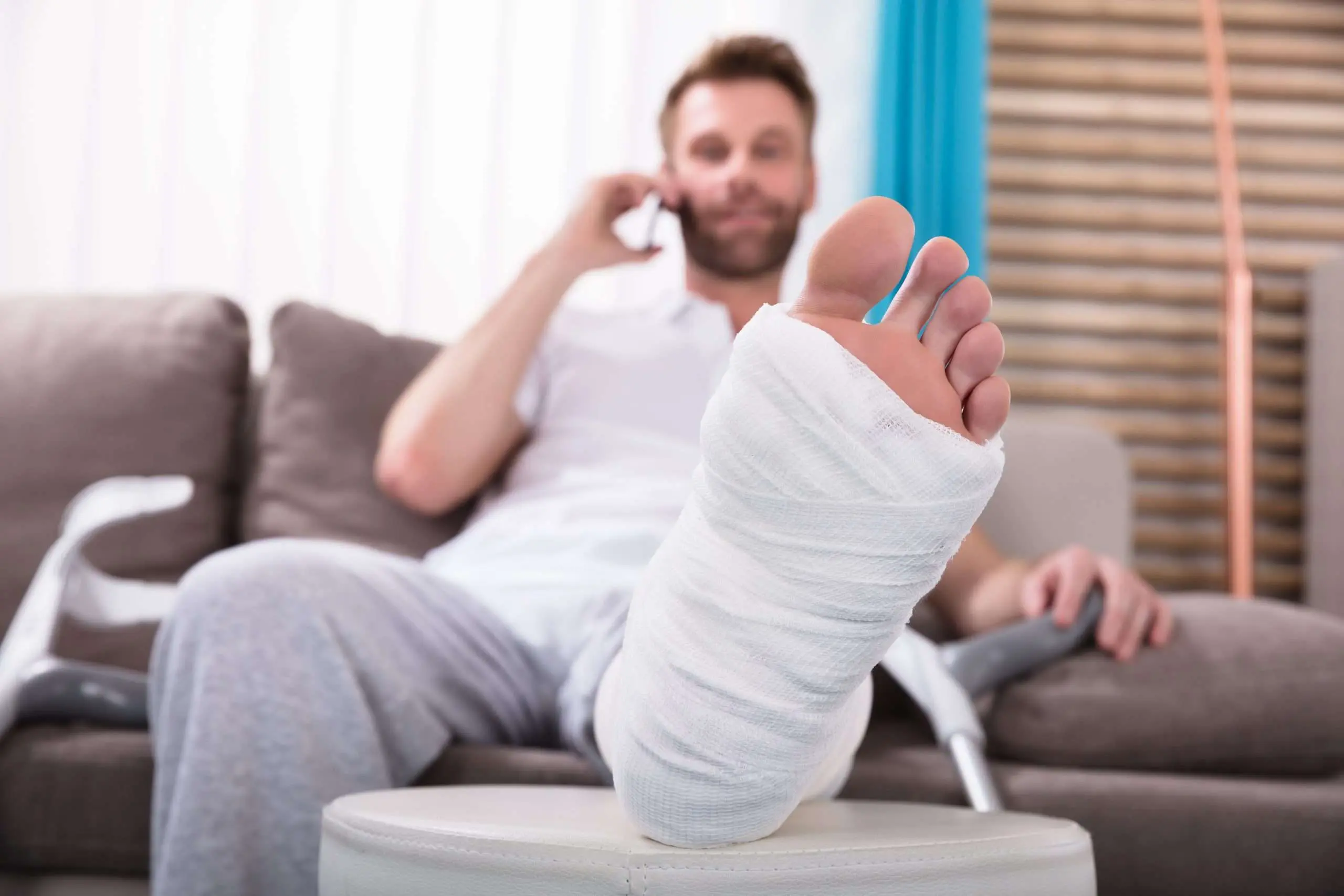
You don’t have to stop playing sports just because you have a cast on your foot.
There’s nothing keeping you from participating in athletics if you have a doctor’s okay and a foot that can handle a certain level of movement.
Here are five activities that you can participate in when your foot is broken and in a cast.
1. Swimming
Swimming with a cast is no longer considered impossible.
Waterproof insulation is now standard on most fiberglass casts.
When it comes to the traditional cast, there are now waterproof cast protectors that allow the foot to be submerged in water without the cast dissolving.
Regardless of the use of such protection, there are several additional precautions to take when joining the water:
- Stay away from natural water sources including lakes and rivers.
- Select a less difficult swimming form, such as breaststroke.
- To compensate for the lack of movement in your foot, bring a swimming board with you.
- Hair dryers can not be used to dry the cast because they can inflict burns.
Calves, thighs, abs, and pecs will all be exercised in the breaststroke.
2. The butterfly
The butterfly, also known as the Pec Deck, is a powerful machine that is always the center of attention in gyms.
You lift a weight by tensing your chest muscles and pulling your elbows together in this workout.
This system is perfect if you have one foot in a cast because it allows you to sit down.
Often, if you want to use your rest time to improve upper-body muscle control, the butterfly is a perfect way to do so.
The pecs, biceps, and sternum will all be exercised with the butterfly.
3. The kayak
Kayaking, like the Butterfly, is a sport that puts the least amount of strain on the lower limbs.
When done outdoors, however, this sport necessitates a higher level of physical performance.
As a result, it is preferable to get to know yourself before attempting to practice, especially if one foot or leg is in a cast.
If boats are not your thing, you can still row, which requires identical muscle systems.
Back muscles, elbows, triceps, biceps, abs, and pecs will all be exercised when kayaking.
4. The exercise bike
Prolonged immobilization of a foot usually causes atrophy of the leg.
By stimulating the muscles of the leg, the stationary bicycle helps to reduce the occurrence of this degradation.
However, because cycling puts more stress on the foot, you should not practice cycling until the end of treatment or wait until you can wear a brace.
Cycling will exercise your calves, thighs, quads, hamstrings, glutes, abs, and lower back.
5. Abdominal muscles
Although arm, back, and leg strength are critical, the abdominal girdle should not be overlooked.
Many complex abdominal workouts may also be performed in the privacy of your own house.
Here are a few examples:
- Side bend while lying down;
- Crunch with rotation;
- Pelvis lifts or bust lifts;
- Pelvis twists while lying down.
PiedRéseau: tow to minimize the cast’s effects on your sports activity
Just like the cast, each foot injury has its own characteristics.
As a result, it’s important that you know what there is to know about your health before engaging in all of the above activities.
Do you think you’ll be able to exercise with your foot in a cast? Contact your local PiedRéseau clinic and put your mind at ease.